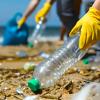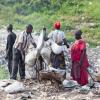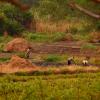
The following statistics are from the last 5 full calendar years: 2019-2023
Publications
Pagination
Pagination
Projects
| Name | Start | End Sort ascending | Abbreviation | Classification |
|---|---|---|---|---|
| Open ENergy TRANsition ANalyses for a low-Carbon Economy | 2019 | 2023 | OpenENTRANCE | Global |
| Complex Urban Systems for Sustainability and Health | 2018 | 2023 | CUSSH | Global |
| MUltisource data package tools and SErvices | 2022 | 2023 | MUSE | Global |
| Modelling of LULUCF emissions and sinks, and of related mitigation options for EU Member States, associated with a POTEnCIA decarbonisation scenario | 2022 | 2023 | POTEnCIA | Global |
| Foell Fund for IIASA-University of Wisconsin Partnership | 2023 | 2023 | Foell Fund 2023 | Global |
| Groundwater for Deep Reslience in Africa (G4DR) (Pre-project phase) | 2023 | 2023 | G4DR_PreProject | Multi-Regional / Country |
| European Topic Centre for Biodiversity and Ecosystem 2023 | 2023 | 2023 | ETC BE 2023 | Global |
| Population Dynamics under Global Climate Change | 2022 | 2022 | POPCLIMA | Global |
| World Energy Outlook 2021- Air Pollution and Emissions Analysis & Modelling Lot 1 |
2021 | 2022 | WEO2021 - Lot 1 | Global |
| Global Agro-Ecological Zoning data version 5 and model documentation | 2021 | 2022 | GAEZ_2021 | Global |
Pagination
Engagement
People
- Women
- Men
- Women
- Men
- Women
- Men
- Women
- Men
- Unknown
News

05 November 2024
Women's education influences fertility rates in sub-Saharan Africa

02 September 2024
IIASA-led research lauded with Outstanding Article Award

15 April 2024
Collaborating to devise a strategy for organic waste management in Uganda
Events
Focus

29 August 2024
Experiencing the science that we write about
IIASA researcher, Linda See, shares her experiences at the coalface of where plastic pollution is collected by volunteers during a beach cleanup event.

08 July 2024
Future food demand in The Gambia: can increased crop productivity and climate adaptation close the supply–demand gap?
The Gambia faces significant food availability issues due to low agricultural productivity. IIASA researchers and colleagues used the FABLE Calculator to explore actions to reduce the food supply-demand gap by 2050. The results, published in Food Security, reveal that current cropland will not meet food demand by 2050.
Publications
Hoffmann, R. & Zens, G. (2024). Interrelated drivers of migration intentions in Africa: Evidence from Afrobarometer surveys. Environmental Development 52 e101096. 10.1016/j.envdev.2024.101096. Falchetta, G. , Vinca, A. , Troost, A., Tuninetti, M., Ireland, G., Byers, E. , Hafner, M., & Zulu, A. (2024). The role of agriculture for achieving renewable energy-centered sustainable development objectives in rural Africa. Environmental Development e101098. 10.1016/j.envdev.2024.101098. (In Press) Pachauri, S. , Coldrey, O., Falchetta, G. , & Pelz, S. (2024). Innovation in distributed energy services for sustainable development: case studies from sub-Saharan Africa. Environmental Research Letters 19 (11) e114090. 10.1088/1748-9326/ad8460. Wamalwa, F., Maqelepo, L., Williams, N., & Falchetta, G. (2024). Solar irrigation potential in Sub-Saharan Africa: a crop-specific techno-economic analysis. Environmental Research: Food Systems 1 (2) e025001. 10.1088/2976-601X/ad5e82. Avidar, O. (2024). A holistic framework for evaluating and planning sustainable rural drinking water projects in sub-Saharan Africa. Journal of Rural Studies 107 e103243. 10.1016/j.jrurstud.2024.103243.